Mark Anthony Neal's Blog, page 549
December 29, 2016
Making Sense of Political Language — and Euphemisms — in the Trump Era with John McWhorter
 'Terms like "alt-right," "racist" and "politically correct" were bandied about around the dinner table over the holidays, and will continue to be heard in the media in the new year. But what is the distinction between the words we use and their true meaning? Is a word like "alt-right" just a political euphemism that obscures a bigoted ideology? Or has the term now entered the mainstream, and is sufficient to refer to white nationalist views? To understand the importance of language in politics, WNYC's Jami Floyd sat down with John McWhorter, who teaches linguistics at Colombia University and is the the author of many books on the subject, including Talking Back, Talking Black, due out next month.' --
WNYC
'Terms like "alt-right," "racist" and "politically correct" were bandied about around the dinner table over the holidays, and will continue to be heard in the media in the new year. But what is the distinction between the words we use and their true meaning? Is a word like "alt-right" just a political euphemism that obscures a bigoted ideology? Or has the term now entered the mainstream, and is sufficient to refer to white nationalist views? To understand the importance of language in politics, WNYC's Jami Floyd sat down with John McWhorter, who teaches linguistics at Colombia University and is the the author of many books on the subject, including Talking Back, Talking Black, due out next month.' --
WNYC
Published on December 29, 2016 06:15
December 28, 2016
Chapter & Verse: Hua Hsu & Jeff Chang on Music + Race + the Craft of Writing
 'Hua Hsu (The New Yorker) and Jeff Chang (We Gon' Be Alright) take on a set of urgent questions: how is it that, as American culture becomes increasingly 'colorized,', its politics get increasingly polarized in terms of black and white? What are the roots of this divide? Where do Asian-Americans fit in? And how might a Berkeley education (both Hsu and Chang are Cal alums) set up a writer to see the faultlines of this terrain?' --
Chapter & Verse
with Scott Saul
'Hua Hsu (The New Yorker) and Jeff Chang (We Gon' Be Alright) take on a set of urgent questions: how is it that, as American culture becomes increasingly 'colorized,', its politics get increasingly polarized in terms of black and white? What are the roots of this divide? Where do Asian-Americans fit in? And how might a Berkeley education (both Hsu and Chang are Cal alums) set up a writer to see the faultlines of this terrain?' --
Chapter & Verse
with Scott Saul
Published on December 28, 2016 07:05
A 'Careless Whisper' in Alabama: George Michael in Muscle Shoals by Charles L. Hughes
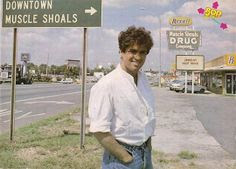 A 'Careless Whisper' in Alabama: George Michael in Muscle Shoalsby Charles L. Hughes | @CharlesLHughes2 | NewBlackMan (in exile)
A 'Careless Whisper' in Alabama: George Michael in Muscle Shoalsby Charles L. Hughes | @CharlesLHughes2 | NewBlackMan (in exile)When George Michael began his solo career in 1984, his first move was both appropriate and auspicious: he went to Muscle Shoals to work with legendary Atlantic Records producer Jerry Wexler.
This decision made a lot of sense. Michael was a soul-influenced vocalist whose early Wham! hits bridged the vibrant emotionalism of the 1960s with the joyous throb of the post-disco 1980s. Jerry Wexler had produced countless soul hits for Atlantic and had long been particularly interested in developing the talents of white soul singers, who he saw as talented vessels of crossover commercial success and signals of music’s ability to break down racial boundaries.
And Muscle Shoals had gained a worldwide reputation in the 1960s and 1970s as a home of deep soul and site of countless hit recordings (many produced by Jerry Wexler) for artists ranging from Aretha Franklin to the Osmonds. Recognizing the potential in the talented young Wham! hitmaker, Wexler took Michael to Muscle Shoals Sound. Opened in 1969 by the former house band at FAME Studios, Muscle Shoals Sound had been a Wexler favorite since the beginning. Given the band’s talents, the producer’s track record, and the singer’s potential, the studio seemed like the perfect place to record the song that eventually became Michael’s breakthrough solo hit, “Careless Whisper.”
Still, upon hearing the finished product, Michael was unhappy and decided not to release it. He returned to England and recorded the song with his live band. Additionally, he produced the new version himself, a practice that he would continue throughout his blockbuster solo career. When the new version of “Careless Whisper” was released in early 1984, it went to #1 on both sides of the Atlantic and reached #8 on the Black Singles chart as well, the first of many R&B smashes for Michael throughout his solo career. The original, Shoals-recorded track would eventually find its way onto the B-side of a Japanese single.
Listening to both versions, the musical differences are more a matter of degree than a difference in design. Both feature the same central elements – the brooding lead vocal, subtly Latin rhythms, and mournful saxophone line that affirm and complicate Michael’s regretful lament. But the released version offers a louder and more limber drum track (in contrast to an unusually plodding thud from drummer Roger Hawkins on the Shoals version), a crisper guitar line, and a more dynamic performance from Michael himself. Although the Wexler-produced version is pretty good, the final “Careless Whisper” speaks more forcefully to the pop and R&B of the mid-1980s and provides a far more effective vehicle for Michael’s emergent solo identity.
Asked to comment on his reasoning, Michael framed his dissatisfaction with the original “Careless Whisper” less in terms of particular sonic characteristics and more as an assertion of his independence from the expectations of soul symbolism. “I’d gone to Alabama and literally been so overwhelmed by [Wexler’s] track record that I felt that I should just sit back and allow things to happen,” he said remember, “which really was a mistake, because however good it was, it wasn’t actually going to be the record that I initially had in my head.”
By employing, and then (respectfully) rejecting the work created in Muscle Shoals, Michael announced that he would not be tied to the iconographic and sonic signifiers of soul music’s past, nor would he adhere to a narrow revivalist impulse that explicitly privileged nostalgia and implicitly argued for a better and realer musical past. (Additionally, and ironically, Michael’s decision more accurately reflected the versatile and pop-minded orientation of the Shoals’s musicians better than narratives that position the city as a symbol of a narrow musical past.)
Instead, Michael insisted on a dynamic and contemporary relationship to black music that would be crucial to his emergence as an expert pop auteur and his astonishing success on the R&B charts.
George Michael’s time in Muscle Shoals is only a footnote in his remarkable and too-short career. But, when considering the many contributions of this bold and brilliant artist, it is nonetheless worth remembering.
+++
Charles L. Hughes is Director of the Memphis Center at Rhodes College. His book, Country Soul: Making Music and Making Race in the American South, is now available from the University of North Carolina Press. Follow him on Twitter @CharlesLHughes2.
Published on December 28, 2016 06:03
December 26, 2016
Mahershala Ali on Playing Strong Characters: "How People See You Can Become Very Narrow"
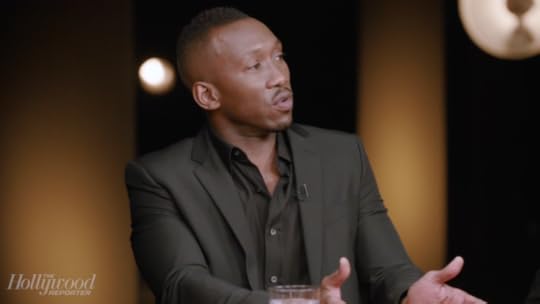 "It becomes a fight for you to be thought of in a different light and also fighting your own fear, wondering if you can do something beyond what you've done already," says the Moonlight star Mahershala Ali -- Hollywood Reporter
"It becomes a fight for you to be thought of in a different light and also fighting your own fear, wondering if you can do something beyond what you've done already," says the Moonlight star Mahershala Ali -- Hollywood Reporter
Published on December 26, 2016 05:51
Studio 360: August Wilson's House
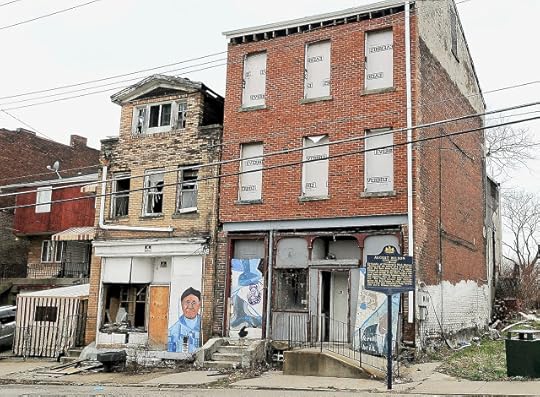 'The Pulitzer and Tony Award winning writer
August Wilson
based many of his plays in the Hill District, the predominantly black neighborhood in Pittsburgh where he grew up. Recently, one of the plays, Seven Guitars, was performed in the backyard of Wilson’s childhood home. Producer Erika Beras visits the neighborhood and reveals the ways August Wilson’s legacy has — and has not — been preserved.' --
Studio 360
'The Pulitzer and Tony Award winning writer
August Wilson
based many of his plays in the Hill District, the predominantly black neighborhood in Pittsburgh where he grew up. Recently, one of the plays, Seven Guitars, was performed in the backyard of Wilson’s childhood home. Producer Erika Beras visits the neighborhood and reveals the ways August Wilson’s legacy has — and has not — been preserved.' --
Studio 360
Published on December 26, 2016 05:30
December 24, 2016
In Focus: Exploring Black Representation in Entertainment
 'After back to back years of #OscarsSoWhite, 2016 has opened up promising new opportunities for black Americans in entertainment. In this special episode, The Takeaway is exploring the history and rise of African-Americans in television, film, and theater with
Scott Heath
a cultural theorist and professor of English at Georgia State University; Filmmaker
Julie Dash
; Legendary producer, writer, and director Norman Lear; Actress and singer
Leslie Uggams
; and writer and filmamker Sacha Jenkins, who talks about Cane River, a little seen film by his father Horace Jenkins, a black director who died months after the film's premiere in 1982.'
'After back to back years of #OscarsSoWhite, 2016 has opened up promising new opportunities for black Americans in entertainment. In this special episode, The Takeaway is exploring the history and rise of African-Americans in television, film, and theater with
Scott Heath
a cultural theorist and professor of English at Georgia State University; Filmmaker
Julie Dash
; Legendary producer, writer, and director Norman Lear; Actress and singer
Leslie Uggams
; and writer and filmamker Sacha Jenkins, who talks about Cane River, a little seen film by his father Horace Jenkins, a black director who died months after the film's premiere in 1982.'
Published on December 24, 2016 10:26
December 23, 2016
Meet H.E.R. -- A Rising Voice in R&B Whose Face Remains A Mystery
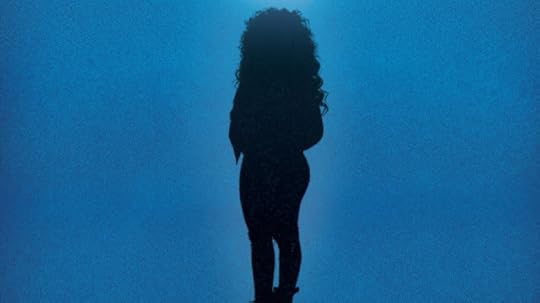 'The singer and songwriter H.E.R. says her performing name is an acronym for "having everything revealed." It's perhaps the most ironic choice possible for the rising R&B artist, given that almost no one knows who she is. Her legal name isn't public, the photo on the cover of her debut EP, H.E.R. Volume 1 — which, incidentally, reached No. 1 on the iTunes R&B chart — shows only a darkened silhouette.' -- +NPR Music
'The singer and songwriter H.E.R. says her performing name is an acronym for "having everything revealed." It's perhaps the most ironic choice possible for the rising R&B artist, given that almost no one knows who she is. Her legal name isn't public, the photo on the cover of her debut EP, H.E.R. Volume 1 — which, incidentally, reached No. 1 on the iTunes R&B chart — shows only a darkened silhouette.' -- +NPR Music
Published on December 23, 2016 22:32
Music + Visuals: Common -- 'Letter To The Free' (feat. Bilal)
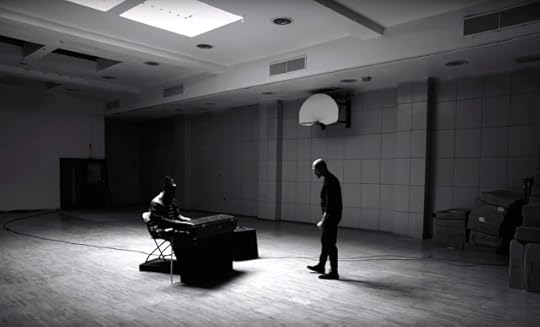 Music and visuals for Common's "Letter To The Free" (featuring Bilal), from his Black America Again project.
Music and visuals for Common's "Letter To The Free" (featuring Bilal), from his Black America Again project.
Published on December 23, 2016 22:25
Samuel "Blitz The Ambassador" Bazawule: "Cacophony is the Symphony"|
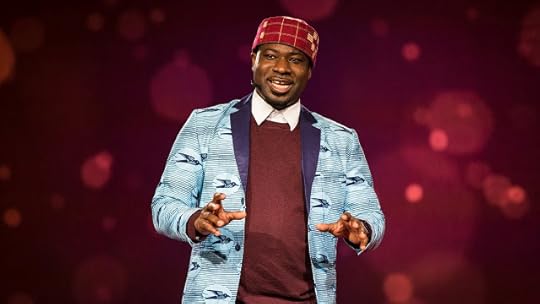 'Most musicians pride themselves on their mastery of their technical knowledge of their craft – like reading and composing sheet music. For Samuel "Blitz The Ambassador" Bazawule , however, it was the complete opposite. His unique African fusion sound came about because of his lack of knowledge in those areas, and that has made all the difference.' --
TED Archive
'Most musicians pride themselves on their mastery of their technical knowledge of their craft – like reading and composing sheet music. For Samuel "Blitz The Ambassador" Bazawule , however, it was the complete opposite. His unique African fusion sound came about because of his lack of knowledge in those areas, and that has made all the difference.' --
TED Archive
Published on December 23, 2016 22:16
Professional Black Girl -- Episode 14: Asia Leeds
 'Asia Leeds. Scholar of the African Diaspora. World Traveler. #TrapProfessor. GiveMeBody Goddess. And #ProfessionalBlackGirl. Follow Asia: IG/Twitter @asialeeds.
'Asia Leeds. Scholar of the African Diaspora. World Traveler. #TrapProfessor. GiveMeBody Goddess. And #ProfessionalBlackGirl. Follow Asia: IG/Twitter @asialeeds.Shout out to Honey Blossom Salon in Charlotte, NC where this episode was filmed.
Published on December 23, 2016 22:09
Mark Anthony Neal's Blog
- Mark Anthony Neal's profile
- 30 followers
Mark Anthony Neal isn't a Goodreads Author
(yet),
but they
do have a blog,
so here are some recent posts imported from
their feed.



